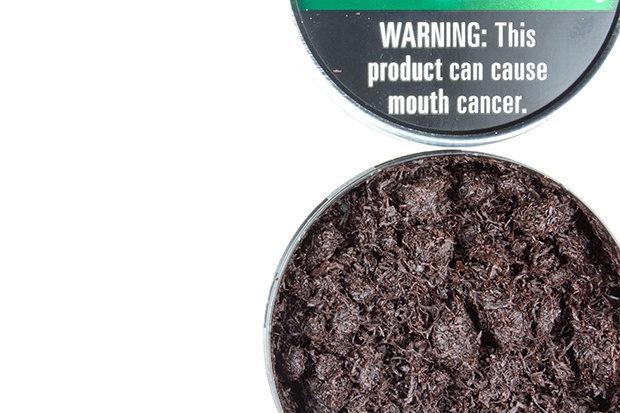
By Alexander Germanis
Founding Father Benjamin Franklin was known for many sayings, but where the medical field is concerned, perhaps his most applicable is this one: “an ounce of prevention is worth a pound of cure.”
Simply put, it is far easier and simpler to take minor precautions than to pay the consequences after something otherwise avoidable occurs.
Oral cancer is certainly one of those easily preventable things. There are many small precautions one can take in order to remain cancer-free or head off cancer in the very early stages.
As described in previous parts of the series, oral cancer is actually a broader term referring to a number of cancers such as cancer of the lips, the hard and soft palates, the sinuses, the tongue, the throat, and the floor of the mouth.
As experts on the oral region, dentists and dental hygienists are trained at performing oral cancer screenings. McLean County Dental’s hygienists, Christie, Kelly, and Jill point out that since everyone should be visiting their dentists at least twice a year, there are two built-in opportunities to get screened. A screening is a simple check of the potential problem areas and takes no more than five minutes.
There are, of course, several precautions and preventative measures one can take before a screening. As Jill points out, “Oral cancer is more prevalent in rural areas.” This is due to two major increased risk factors: sun exposure and chewing tobacco use.
“Most of my chewing tobacco patients are from farming areas,” Christie shares. “Or baseball players.” The most obvious way to reduce the risk factor associated with chewing tobacco is, of course, to quit chewing tobacco entirely.
“I tell them they should quit,” Kelly adds, “But if I know they’re not going to, I say at least don’t keep it in the same spot. Move it around.” As a common habit of people who chew is to leave the wad of tobacco in a single place in the mouth for extended periods and repeatedly use the same place in the mouth, this can increase the chances of developing cancer, specifically in that area.
Jill explains how the hygienists can tell where tobacco chewers usually place their tobacco. “The cell changes in the gum tissue, so we immediately see white, wrinkly tissue. It is not necessarily cancer, but something is happening there.”
“When you see that in a dipper’s mouth, they’re already at a precancerous stage,” Kelly warns. “We see that all the time.”
“Your cheek and gums look different; the cells are changing, and you don’t want them to change to cancer,” Jill continues. “So, that’s when we warn people you need to stop doing this or at the very least move the tobacco around.”
Protection of the lips on the other hand is quite simple and easily taken care of. Nevertheless, it is so often overlooked. We tend to remember to apply sun block to our noses, foreheads, and other larger exposed portions of the body, but the lips get forgotten.
This is an oversight that should certainly be corrected, as the skin on the lips is thinner and more delicate and therefore more susceptible to the damaging ultraviolet rays from the sun. Furthermore, other environmental factors like wind and cold air can make the lips lose moisture more readily, leaving them even more exposed to the dangers of the sun.
Applying a lip balm with ultraviolet protection — with a sun protection factor (SPF) of a minimum of 15 — every two hours throughout the day will act to prevent the cancer that can develop as a result of excessive exposure to ultraviolet radiation.
Again the hygienists want to remind everyone to get screened at your dentist’s office the next time you go in for a check-up. The painful and life-threatening “pounds of cure” can easily be avoided by applying these simple “ounces” of prevention.
To learn more about the signs of oral cancer, read next month’s issue of Healthy Cells Magazine. If you missed the previous articles in this series, you may read them online at www.HealthyCellsBN.com or contact Cheryl at
309-664-2524.
For more information or to schedule a dental check-up, you may contact Emil Verban Jr., DDS at 309-662-8448 or visit www.mcleancountydental.com. McLean County Dental is located at 2103 E. Washington Street in Bloomington. Dr. Verban provides his patients both general dentistry expertise and the ability to provide specialized services such as sedation dentistry, cosmetic procedures, and dental implants.

